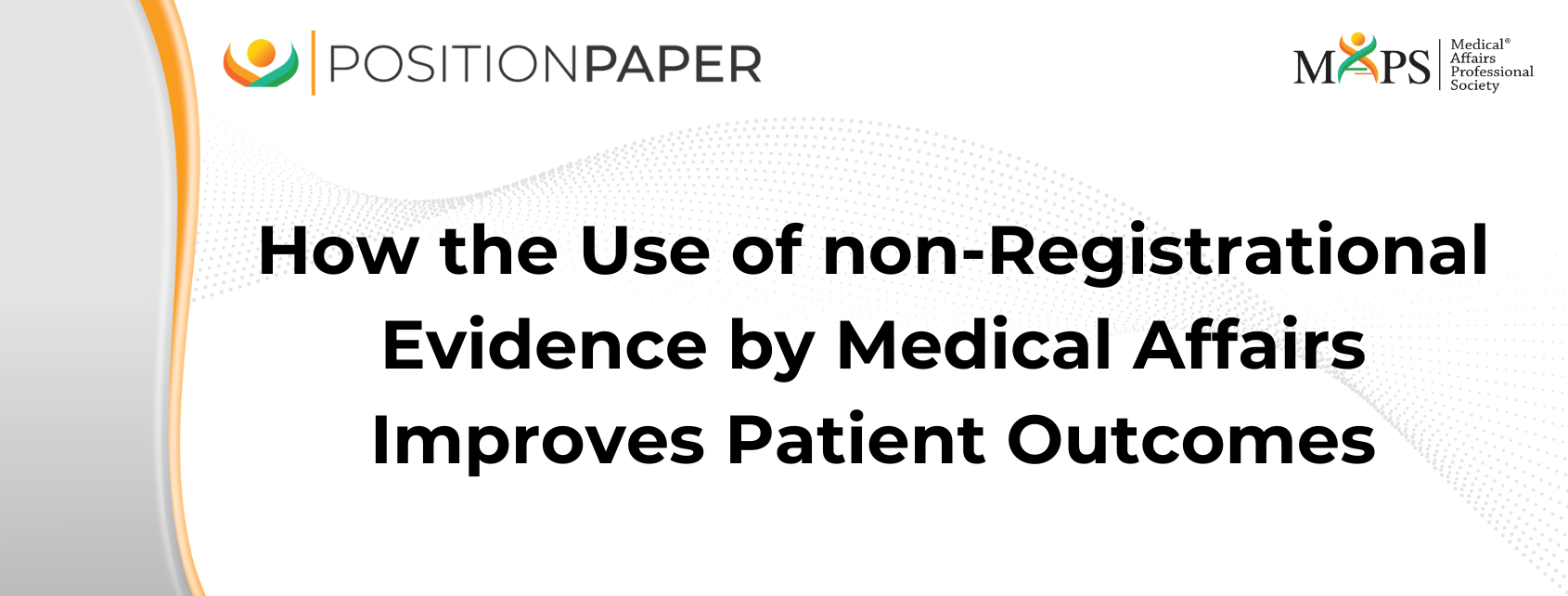By members of the Executive Consortium of the Medical Affairs Professional Society (MAPS)
This publication represents the consensus opinion of the MAPS Executive Consortium but does not represent formal endorsement by the authors’ organizations.
Introduction
In the biopharmaceutical industry, the organization’s Research and Development (R&D) function manages a program including Phase 1-3 clinical trials that leads to regulatory approval. Concurrently and continuing after approval, Medical Affairs manages a program to answer questions not addressed in the regulatory filing, but that remain essential in helping healthcare providers and others within the healthcare ecosystem optimize patient benefit1. Will the drug work in patient populations beyond the narrowly defined clinical trial inclusion criteria? What about in patients with comorbidities? Or those taking other medications? How could an understanding of the natural history of a disease improve care paths and disease management? How do factors such as burden of disease and quality of life impact the decisions of payors and Health Technology Assessment (HTA) bodies, and what are the impacts on Healthcare Resource Utilization (HCRU)?
Answering these questions requires identifying/generating and interpreting non-Registrational Evidence (nRE)2. Very basically, the goal of nRE is to provide a framework for understanding how a drug functions in patient populations and real-world situations beyond those addressed in the regulatory filing. Along with the evidence from clinical development, nRE is included in the organization’s cross-functional Integrated Evidence Plan (IEP).
This paper discusses the sources, uses and benefits to the organization, to society and to patients of nRE, and describes why Medical Affairs – as the bridge between the organization and external stakeholders – is uniquely positioned to lead and own the strategic plan for the generation and use of nRE.



